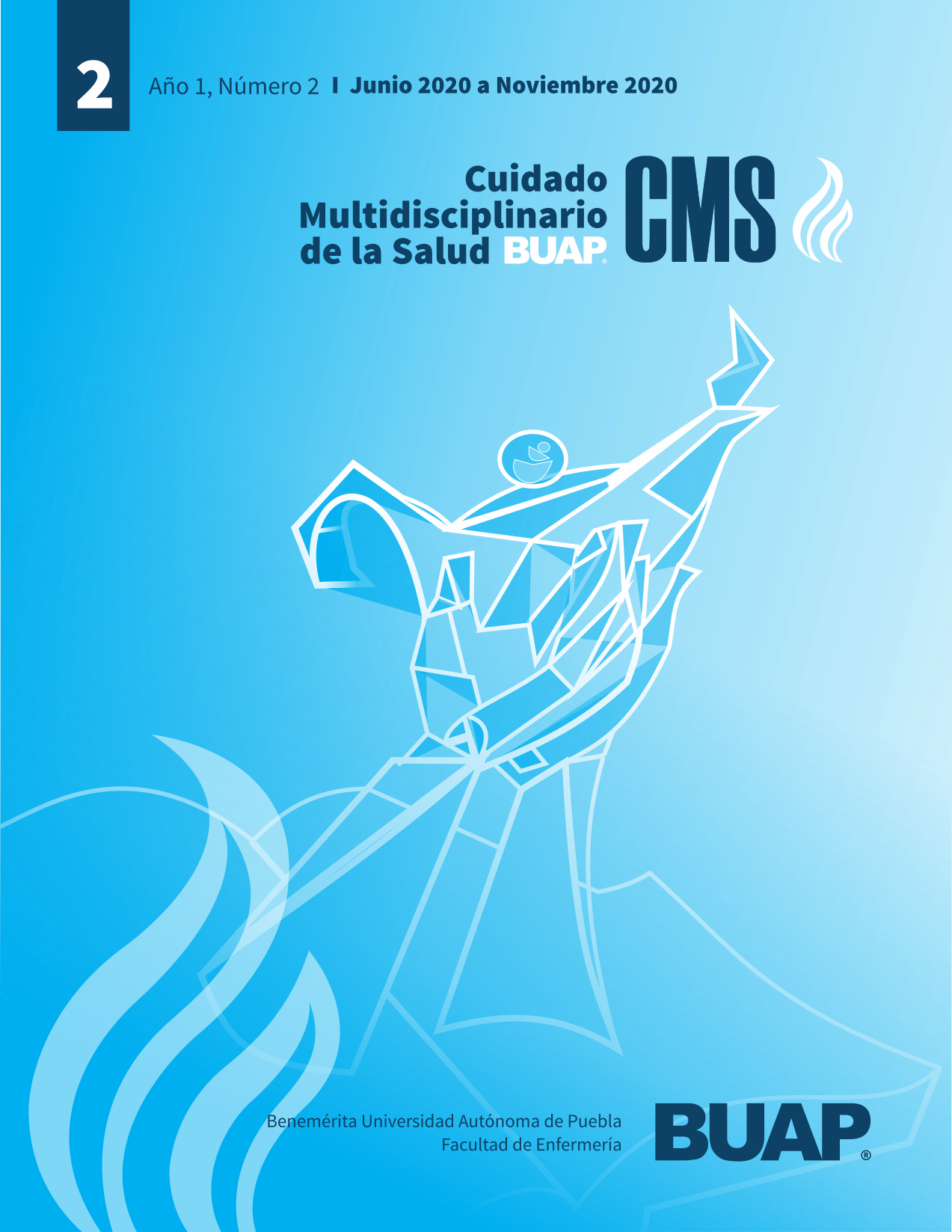Seroclasificación del VHC en el uso de drogas inyectables: Revisión de alcance
Palabras clave:
Hepatitis C, Usuarios de drogas, Conducta de reducción de riesgo, (DeCS)Resumen
Introducción. Las personas que utilizan drogas inyectables tienen un alto riesgo de adquirir el virus de la hepatitis C, por lo que utilizan estrategias de reducción de riesgo como la seroclasificación. Se desarrolló una revisión de alcance para identificar los elementos relacionados a la seroclasificación para el virus de la hepatitis C en personas que usan drogas inyectables.
Material y Métodos. Se recuperaron artículos de PubMed, PsyINFO y Web of Sciences con serosort*, serosorting y HCV, hepatitis en el título o resumen, escritos en inglés o español, en poblaciones de personas que usan drogas inyectables. No se aplicaron restricciones en año o tipo de diseño y se excluyó literatura gris.
Resultados. Se extrajeron 34 referencias y cuatro fueron incluidas en la síntesis del conocimiento. Los elementos identificados para el proceso de seroclasificación fueron: autoconocimiento del seroestado y la develación del mismo, raza/etnia, edad, nivel de ingresos, nivel educativo, estado de calle, empleo, edad de la primera inyección, el género y área geográfica (rural, urbana).
Conclusiones. La seroclasificación del virus de la hepatitis C en personas que usan drogas inyectables es un proceso individual e interpersonal que incluye la toma de decisiones sobre el uso compartido de jeringas, que necesita que las personas que lo ponen en práctica conozcan su seroestado. Además, éste se construye por fuerzas socio-estructurales como la disponibilidad de servicios de detección, tratamiento y cuidado del virus de la hepatitis C.
Citas
Burt, R. D., Thiede, H., & Hagan, H. (2009). Serosorting for hepatitis C status in the sharing of injection equipment among Seattle area injection drug users. Drug and Alcohol Dependence, 105(3), 215–220. Doi: https://psycnet.apa.org/doi/10.1016/j.drugalcdep.2009.07.005
Center for Disease Control and Prevention. (s/f). Hepatitis C Questions and Answers for Health Professionals. Recuperado el 18 de mayo de 2019, de: https://www.cdc.gov/hepatitis/hcv/hcvfaq.htm#section1
Degenhardt, L., Peacock, A., Colledge, S., Leung, J., Grebely, J., Vickerman, P., … Larney, S. (2017). Global prevalence of injecting drug use and sociodemographic characteristics and prevalence of HIV, HBV, and HCV in people who inject drugs: a multistage systematic review. The Lancet Global Health, 5(12), e1192–e1207. Doi: https://doi.org/10.1016/S2214-109X(17)30375-3
Duncan, I., Curtis, R., Reyes, J. C., Abadie, R., Khan, B., & Dombrowski, K. (2017). Hepatitis C serosorting among people who inject drugs in rural Puerto Rico. Preventive Medicine Reports, 6, 38–43. Doi: https://doi.org/10.1016/j.pmedr.2017.02.001
Duncan, I., Habecker, P., Hautala, D., Khan, B., & Dombrowski, K. (2018). Injection-related hepatitis C serosorting behaviors among people who inject drugs: An urban/rural comparison. Journal of Ethnicity in Substance Abuse, 1–16. Doi: https://doi.org/10.1080/15332640.2018.1425950
Eaton, L. A., Kalichman, S. C., Cain, D. N., Cherry, C., Stearns, H. L., Amaral, C. M., … Pope, H. L. (2007). Serosorting sexual partners and risk for HIV among men who have sex with men. Seroclasificación del VHC en el uso de drogas inyectables: Revisión de alcance. American Journal of Preventive Medicine, 33(6), 479–485. Doi: https://doi.org/10.1016/j.amepre.2007.08.004
Elsevier. (s/f). Mendeley. Version 1.13.8. Hotton, A. L., Gratzer, B., & Mehta, S. D. (2012). Association between serosorting and bacterial sexually transmitted infection among HIV-negative men who have sex with men at an urban Lesbian, gay, bisexual, and transgender health center. Sexually Transmitted Diseases, 39(12), 959–964. Doi: 10.1097/OLQ.0b013e31826e870d
Kerr, T., Mitra, S., Kennedy, M. C., & McNeil, R. (2017). Supervised injection facilities in Canada: past, present, and future. Harm Reduction Journal, 14(1), 28. Doi: https://doi.org/10.1186/s12954- 017-0154-1
Kim, A. Y., & Page, K. (2013). Hepatitis C virus serosorting in people who inject drugs: sorting out the details. The Journal of Infectious Diseases, 208(12), 1929–1931. Doi: https://doi.org/10.1093/ infdis/jit526
Osmond, D. H., Pollack, L. M., Paul, J. P., & Catania, J. A. (2007). Changes in prevalence of HIV infection and sexual risk behavior in men who have sex with men in San Francisco: 1997–2002. American Journal of Public Health, 97(9), 1677–1683. Doi: https://doi.org/10.2105/AJPH.2005.062851
Peters, M. D. J., Godfrey, C. M., Khalil, H., McInerney, P., Parker, D., & Soares, C. B. (2015). Guidance for conducting systematic scoping reviews. International Journal of Evidence-Based Healthcare, 13(3), 141–146. Doi: 10.1097/XEB.0000000000000050
Purcell, D. W., Higa, D., Mizuno, Y., & Lyles, C. (2017). Quantifying the harms and benefits from serosorting among HIV-negative gay and bisexual men: A systematic review and meta-analysis. AIDS and Behavior, 21(10), 2835–2843. Doi: https://doi.org/10.1007/s10461-017-1800-z
Smith, B. D., Jewett, A., Burt, R. D., Zibbell, J. E., Yartel, A. K., & DiNenno, E. (2013). “To share or not to share?” Serosorting by hepatitis C status in the sharing of drug injection equipment among NHBS-IDU2 participants. The Journal of Infectious Diseases, 208(12), 1934–1942. Doi: https:// doi.org/10.1093/infdis/jit520
Surkan, P. J., Li, Y., Jacobson, L. P., Cox, C., Silvestre, A., Gorbach, P., … Plankey, M. (2017). Unsafe sexual behavior among gay/bisexual men in the era of combination antiretroviral therapy (cART). AIDS and Behavior, 21(10), 2874–2885. Doi: https://doi.org/10.1007/s10461-016-1614-4
The Joint United Nations Programme on HIV and AIDS (UNAIDS). (2018). Key population groups, including gay men and other men who have sex with men, sex workers, transgender people and people who inject drugs. Recuperado el 25 de octubre de 2018, de: http://www.unaids. org/en/topic/key-populations
Wilson, D. P., Regan, D. G., Heymer, K. J., Jin, F., Prestage, G. P., & Grulich, A. E. (2010). Serosorting may increase the risk of HIV acquisition among men who have sex with men. Sexually Transmitted Diseases, 37(1), 13–17. doi: 10.1097/OLQ.0b013e3181b35549
World Health Organization. (2016). People who inject drugs. Recuperado el 18 de mayo de 2019, de https://www.who.int/hiv/topics/idu/about/en/
Descargas
Publicado
Cómo citar
Número
Sección
Licencia
Los derechos morales pertenecen al autor, los derechos patrimoniales a la Benemérita Universidad Autónoma de Puebla.






